Country
Crash of a Douglas DC-6B in Donlin Creek
Date & Time:
Jan 31, 2001 at 1315 LT
Registration:
N4390F
Survivors:
Yes
Schedule:
Fairbanks – Donlin Creek
MSN:
44898
YOM:
1956
Crew on board:
3
Crew fatalities:
Pax on board:
0
Pax fatalities:
Other fatalities:
Total fatalities:
0
Captain / Total hours on type:
8100.00
Aircraft flight hours:
37052
Circumstances:
The certificated airline transport captain related that the purpose of the flight was to deliver about 4,800 gallons of fuel oil to the remote mining site. He said that the 5,400 feet long by 100 feet wide airstrip was situated within hilly, snow-covered terrain. He added that the airstrip has a 7 percent uphill grade. Flat light conditions existed at the airstrip, and light snow showers were present, with visibility reported at 2 miles. The captain stated that during final approach, as the airplane passed over the airstrip threshold, flat light conditions made it very difficult to discern where the airstrip surface was. He said that the initial touchdown was "firm", but was thought to be within acceptable tolerances. Just after touchdown, the left wing broke free from the airplane at the wing to fuselage attach point. The airplane veered to the left, and off the left side of the runway. The captain said that the airplane's computed landing weight was 92,260 pounds.
Probable cause:
The flight crew's misjudged flare while landing. Factors associated with the accident were flat light conditions, snow-covered terrain, and an uphill runway grade.
Final Report:

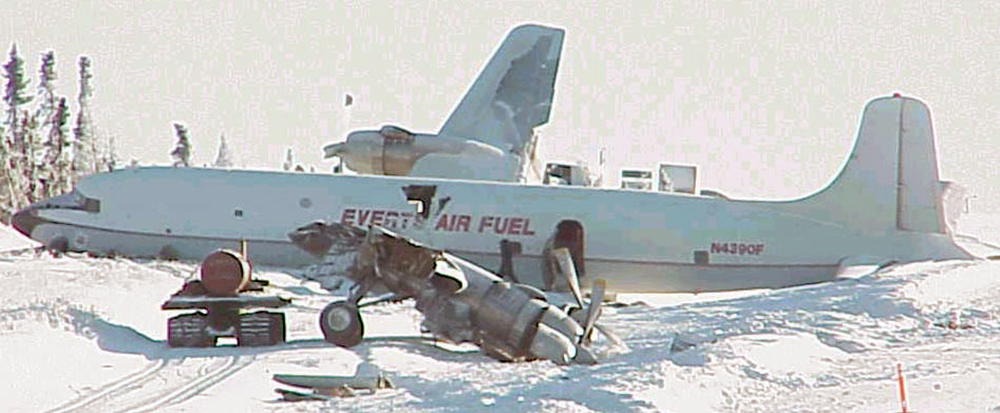
Crash of a Douglas DC-6A in Villavicencio: 4 killed
Date & Time:
Jul 4, 1999 at 1212 LT
Registration:
HK-1776
Survivors:
Yes
Schedule:
Villavicencio – Mitú
MSN:
45499/1011
YOM:
1958
Crew on board:
3
Crew fatalities:
Pax on board:
12
Pax fatalities:
Other fatalities:
Total fatalities:
4
Circumstances:
The aircraft departed Villavicencio-La Vanguardia airport at 1206LT on a cargo flight to Mitú, carrying 12 passengers, three crew members and a load of various goods consisting of food and also 7 tons of fuel in 55 drums. After takeoff from runway 22, while climbing, the engine n°2 lost power. The captain decided to return for an emergency landing and was cleared to land on the same runway. On final approach, the airplane became unstable when the flight engineer shut down the engine n°2. The aircraft landed too far down the runway, about 1,700 feet past the runway threshold. Unable to stop within the remaining distance, it overran and came to rest against an embankment, bursting into flames. Four passengers were killed while 11 other occupants were injured. The aircraft was destroyed.
Probable cause:
The following findings were identified:
- Wrong approach configuration on part of the crew,
- Poor approach planning and execution, causing the aircraft to be unstable on short final,
- The landing speed was excessive and the aircraft landed too far down the runway,
- Unnecessary shut down of the engine n°2, causing the hydraulic systems of the main brakes to be unserviceable,
- Late application of the brakes after touchdown.
- Wrong approach configuration on part of the crew,
- Poor approach planning and execution, causing the aircraft to be unstable on short final,
- The landing speed was excessive and the aircraft landed too far down the runway,
- Unnecessary shut down of the engine n°2, causing the hydraulic systems of the main brakes to be unserviceable,
- Late application of the brakes after touchdown.
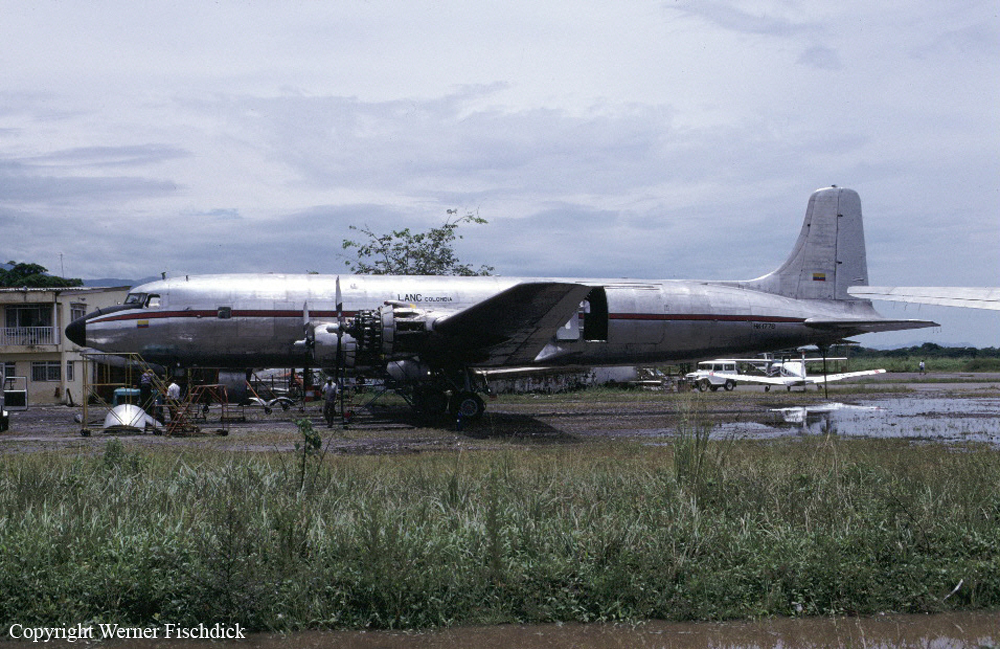
Crash of a Douglas DC-6B in Nixon Fork Mine
Date & Time:
Jan 2, 1998 at 1526 LT
Registration:
N861TA
Survivors:
Yes
Schedule:
Nixon Fork Mine - Palmer
MSN:
43522
YOM:
1952
Crew on board:
3
Crew fatalities:
Pax on board:
0
Pax fatalities:
Other fatalities:
Total fatalities:
0
Captain / Total hours on type:
16000.00
Aircraft flight hours:
46626
Circumstances:
During the takeoff roll, while passing 45 knots indicated airspeed, ice formed between the inner and outer panes of the airplane's windshield, obscuring the crew's vision. The flight crew aborted the takeoff, the airplane drifted off the left side of the snow covered runway, and caught fire. The crew reported the airplane and windshield were cold soaked and the temperature was -10 degrees Fahrenheit. The windshield anti-ice system blows air from a combustion heater between the windshield glass panes. The air source for the heater, once the airplane has forward airspeed, is two leading edge wing scoops. The crew told the NTSB investigator that the taxi time was too short for the windshield to warm up, and that during the taxi, snow was circulated around the airplane and into the wing scoops.
Probable cause:
The ingestion of snow into the windshield anti-ice system, and the resulting obscured windshield which made runway alignment not possible. Factors associated with this accident were the cold windshield, the reduced performance of the windshield anti-ice because of the short taxi by the crew, and the insufficient information on the system provided by the manufacturer.
Final Report:
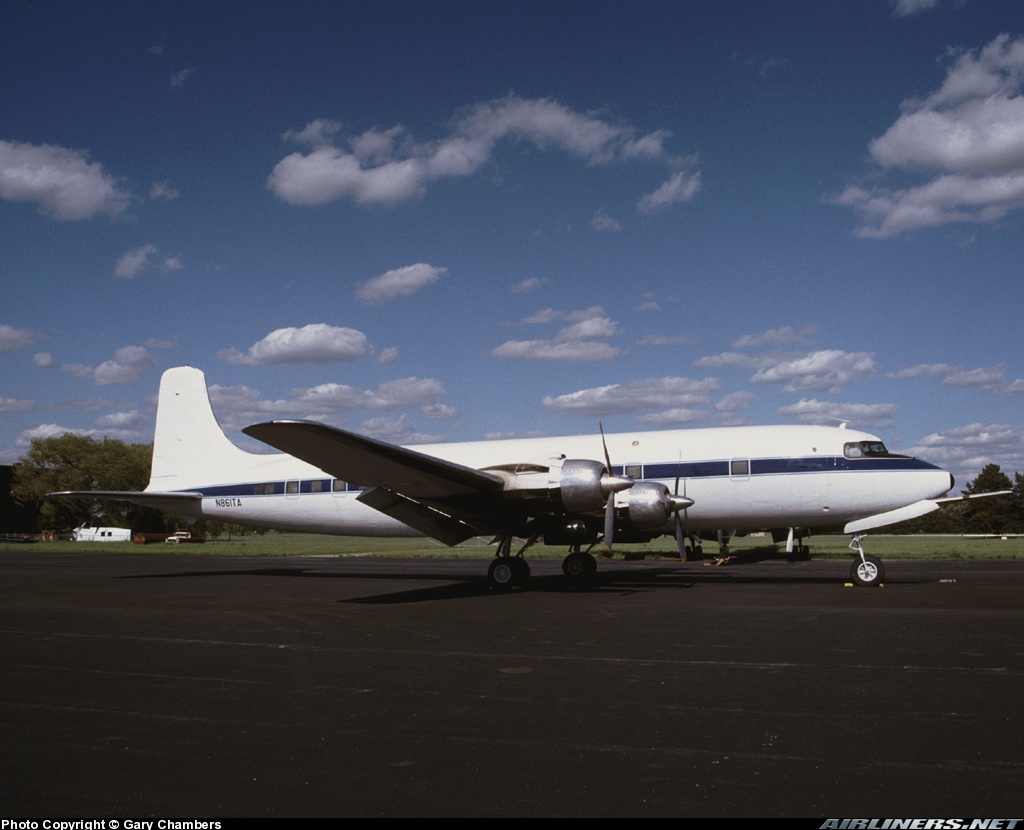

Crash of a Douglas DC-6A in Luzamba
Date & Time:
Aug 7, 1996
Registration:
9Q-CJR
Survivors:
Yes
MSN:
45373
YOM:
1957
Crew on board:
0
Crew fatalities:
Pax on board:
0
Pax fatalities:
Other fatalities:
Total fatalities:
0
Circumstances:
After landing, the four engine aircraft veered off runway and came to rest in the bush. There were no casualties.
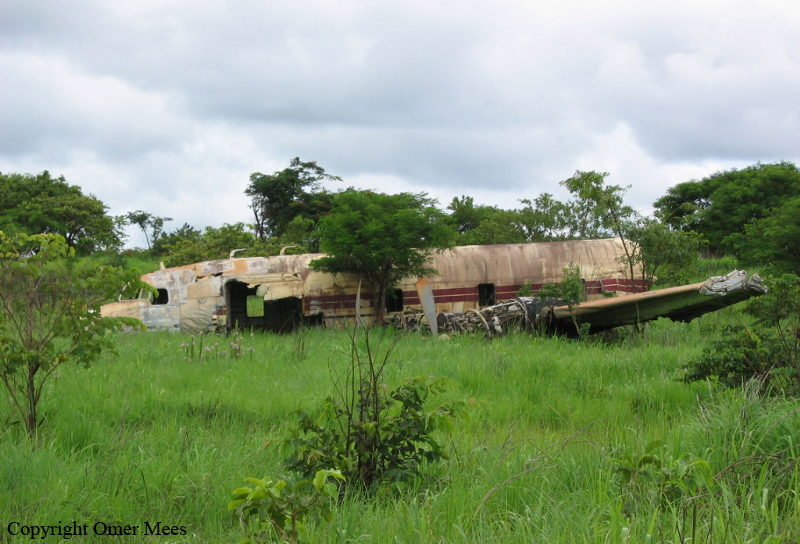
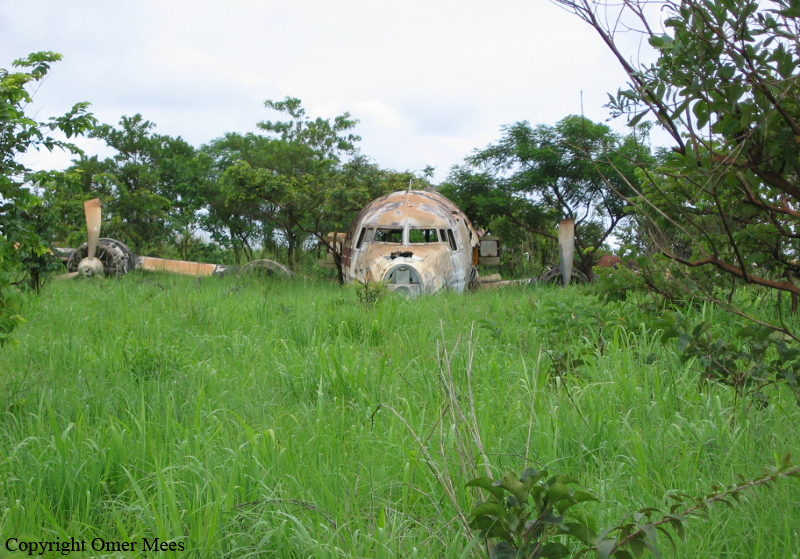
Crash of a Douglas DC-6A in Russian Mission: 4 killed
Date & Time:
Jul 20, 1996 at 1506 LT
Registration:
N313RS
Survivors:
No
Schedule:
Emmonak – Aniak
MSN:
44663
YOM:
1955
Flight number:
HU033
Crew on board:
3
Crew fatalities:
Pax on board:
1
Pax fatalities:
Other fatalities:
Total fatalities:
4
Captain / Total hours on type:
7200.00
Aircraft flight hours:
38248
Circumstances:
The cargo flight was en route, when a fire erupted in or near the #3 engine. During subsequent emergency procedures, the flight crew pulled the fire handle first. Later, they feathered the #3 engine. The fire did not extinguish. During an attempt to land at a rural, intermediate airstrip, while the airplane was in the traffic pattern, witnesses saw fire coming from the area of the #3 engine. They stated the right wing buckled upward, and the airplane crashed. Examination of the wreckage revealed a failure of the master rod in the front bank of cylinders of the #3 engine. Metallurgical tests revealed a crack in the top of the master rod head, which had resulted from corrosion pits. The side of the master rod head was measured and found to be out of round. The master rod shank also fractured due to fatigue. The operator's training procedures and the Douglas Aircraft emergency checklist procedures, required that the engine's propeller be feathered first, and then the fire extinguishing system to be activated. According to information derived from the airplane's cockpit voice recorder, the flight crew reversed that order. The effectiveness of the fire suppression system is diminished if the propeller is not feathered first.
Probable cause:
Fatigue failure of the master connecting rod, which originated from corrosion pitting, subsequently compromised the engine crankcase, and resulted in a fire; and failure of the flight crew to follow emergency procedures by pulling the fire handle before feathering the propeller, which diminished the effectiveness of the fire suppression system.
Final Report:
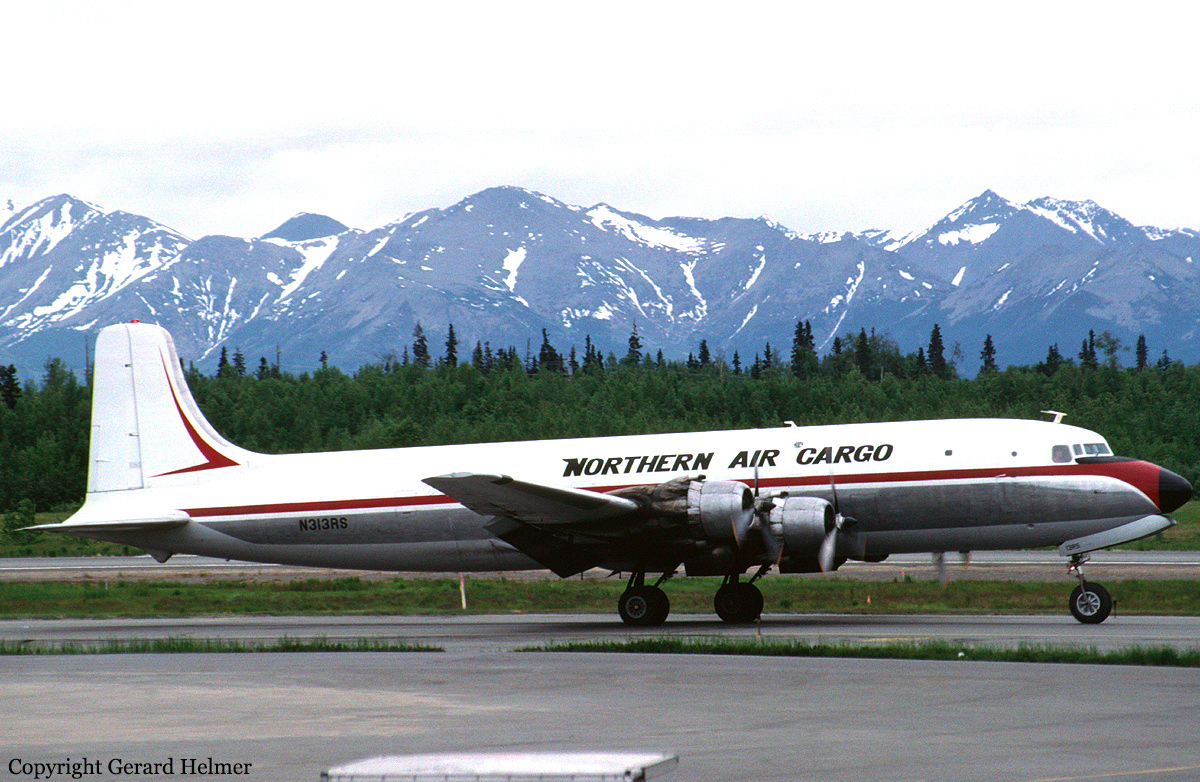
Crash of a Douglas DC-6A in Namibia
Date & Time:
Jul 15, 1994
Registration:
V5-WAC
Survivors:
Yes
MSN:
44668
YOM:
1955
Crew on board:
0
Crew fatalities:
Pax on board:
0
Pax fatalities:
Other fatalities:
Total fatalities:
0
Circumstances:
Suffered an accident while landing in an airfield somewhere in Namibia. There were no casualties but the aircraft was damaged beyond repair. The mishap occurred somewhere in July 1994 (exact date unknown).




